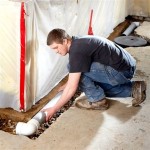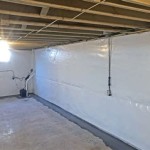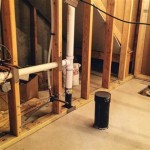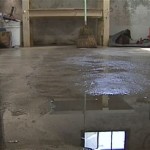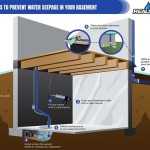How to Insulate a Basement Wall
If you want to make your basement more comfortable and energy-efficient, insulating the walls is essential. Basement walls are often cold and damp, which can make the entire basement uncomfortable to be in. Insulation will help to keep the basement warm in the winter and cool in the summer, and it will also help to reduce moisture levels.
There are a few different ways to insulate a basement wall, but the most common method is to use rigid foam insulation. Rigid foam insulation is available in a variety of thicknesses, and it is easy to cut and install. It is also relatively inexpensive, making it a good option for most homeowners.
To insulate a basement wall with rigid foam insulation, you will need to:
- Clean the wall to remove any dirt or debris.
- Measure and cut the rigid foam insulation to fit the wall.
- Apply adhesive to the back of the rigid foam insulation.
- Press the rigid foam insulation onto the wall.
- Secure the rigid foam insulation with nails or screws.
Once the rigid foam insulation is installed, you can finish the wall with drywall or another type of wallboard.
In addition to rigid foam insulation, there are a few other types of insulation that can be used to insulate a basement wall, including:
- Batt insulation
- Loose-fill insulation
- Spray foam insulation
Batt insulation is made of fiberglass or cellulose, and it is available in rolls or batts. Loose-fill insulation is made of cellulose or vermiculite, and it is poured into place. Spray foam insulation is a type of polyurethane foam that is sprayed onto the wall.
The type of insulation that you choose will depend on your budget and the specific conditions in your basement. If you are not sure which type of insulation is best for your basement, you should consult with a professional.
Insulating your basement wall is a relatively easy and inexpensive project that can make a big difference in the comfort and energy efficiency of your home.
Additional Tips for Insulating a Basement Wall
- If your basement wall is damp, you should install a vapor barrier before you install the insulation. A vapor barrier will help to prevent moisture from penetrating the insulation and causing mold growth.
- If you are insulating a basement wall that is below grade, you should use a type of insulation that is specifically designed for below-grade applications.
- Be sure to seal all of the seams between the pieces of insulation to prevent air leaks.
- Once the insulation is installed, you should finish the wall with a vapor-permeable material, such as drywall or wood paneling.

Three Ways To Insulate A Basement Wall Fine Homebuilding

How To Insulate A Basement Wall Greenbuildingadvisor

Doe Building Foundations Section 2

Healthy Basement Insulation Systems Quality Built Basements Llc

How To Insulate Your Basement S Concrete Walls The Seattle Times

Doe Building Foundations Section 2 1 Insulation

Insulating Basement Walls With Fiberglass Batting Semigloss Design

How To Insulate Your Basement Like A Pro

Insulation For A Conditioned Basement Greenbuildingadvisor

Basement Blanket Insulation Building America Solution Center
See Also


